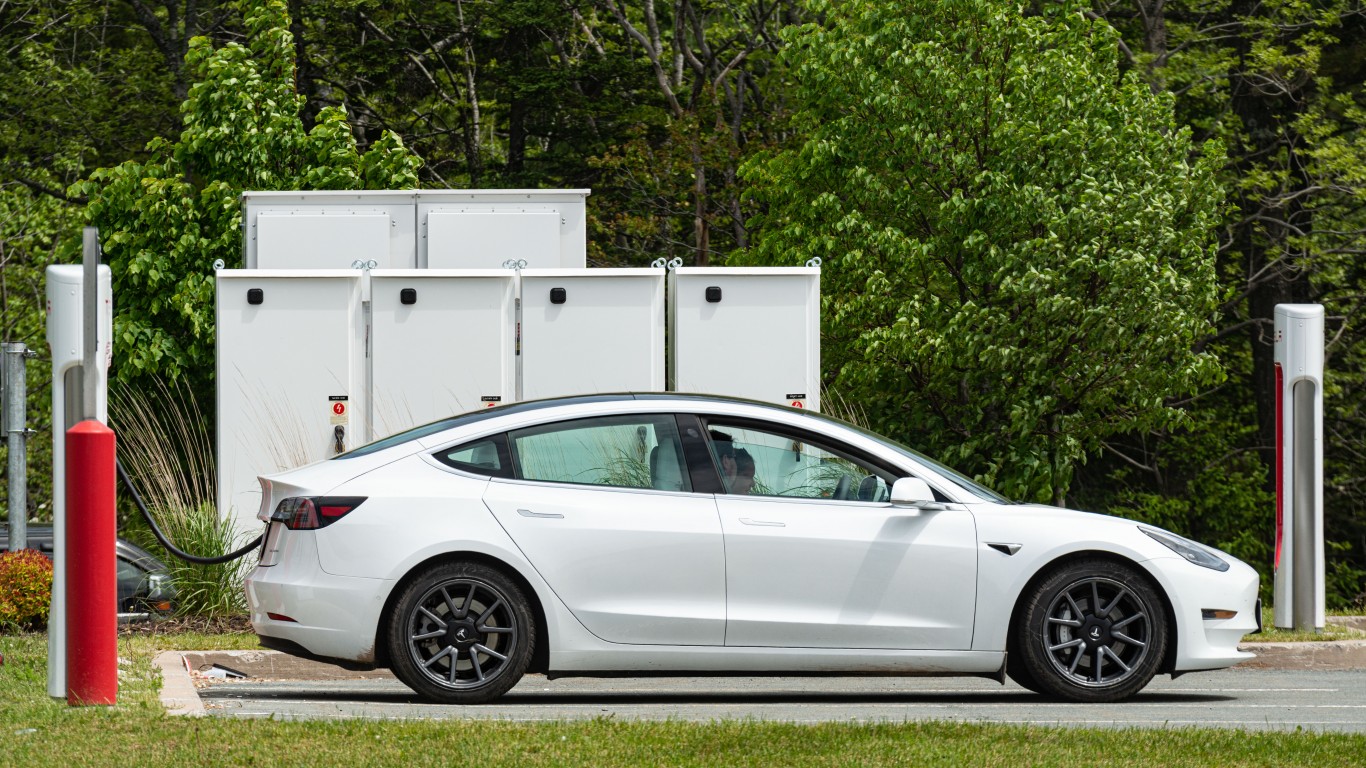U.S. auto sales had a strong month in May, with all three of the Detroit automakers — Ford, GM, Chrysler — posting gains well ahead of analyst estimates.
Most of the leading automakers saw substantial gains, adding to the evidence that the sluggish results seen last winter were due to the weather, not declining consumer confidence.
But in the key battle for pickup-truck supremacy, the longtime leader — Ford (NYSE: F) — surprisingly lost ground.
Ford falls behind while GM and Chrysler surge ahead
Ford said on Tuesday that Ford sales of its F-Series line were down 4.3% in May versus year-ago results. That’s still strong —Ford sold over 68,000 pickups in May — but it’s striking given the substantial year-over-year gains posted by Ford’s key rivals.
General Motors (NYSE: GM) said that sales of its new-for-2014 trucks, the Chevrolet Silverado and GMC Sierra, were up a combined 8.5% in May. That’s a satisfying result for GM, which has been contending with an embarrassing and expensive recall scandal.
But it was Fiat Chrysler (OTC: FIATY) that posted the most impressive gain. FCA trounced both of its traditional rivals with a 17% increase for its surging Ram pickups.
What’s the deal?
They’re all strong contenders. What moves this market?
Pickup fans will argue all day over who makes the best truck. But the truth is, none of these trucks are slouches.
GM took a conservative approach with its new trucks, but critics have generally been pleased with the new Silverado’s smooth handling and upgraded interior. The Ram, last reworked for the 2013 model year, wins big points for drivability — it’s Consumer Reports’s favorite full-sized pickup.
Ford’s F-150, meanwhile, is in the last months of its life before an all-new version arrives late this year. But it’s still America’s best-selling pickup, and Ford has made a tremendous effort to keep its stalwart updated throughout its life cycle.
So why is the Ram up while the F-150 is down? To understand that, we need to explain some of the dynamics of the market for full-sized pickups, starting with this: The buyers that move the pickup market aren’t particularly brand-loyal.
Price matters more than you think
Individual truck-buyers tend to be pretty brand loyal; a longtime Ford guy isn’t all that likely to suddenly go buy a Ram, and vice-versa.
But a lot of pickups aren’t sold to individuals. They’re sold to businesses, contractors and miners and oilfield-services companies and so forth.
Commercial fleet buyers may have their own brand preferences. But most of them make their business purchase decisions for hard-headed financial reasons: Which trucks will cost our business the least to buy and operate?
Gas mileage is part of that calculation; that’s why Ford’s EcoBoost V6 was such a big deal when it was introduced a few years ago, and why GM (with a new fuel-efficient V8) and Ram (with a light-duty diesel) have since introduced their own fuel-efficient pickups.
But price also matter — a lot. And price varies from month to month, depending on the incentives being offered by the automakers.
Sweetening the deal…at a price
When GM first introduced its new trucks last year, it was stingy with incentives. It had a new model and was trying to maximize its profits, part of a larger GM effort to improve its profit margins in North America. That made some sense, but it cost GM a lot of sales; gains for the new Silverado and Sierra lagged those of the Fords and Rams.
Meanwhile, Chrysler was being generous with its incentives, and it gained a lot of market share — especially at the lower end of the market. Ford held its incentives steady, making only small changes from month to month.
Chrysler has since rolled back its truck incentives, and GM has boosted its payouts. All three automakers are now in the same neighborhood. Ford’s were right about $4,000 per truck in May, GM’s and Chrysler’s a little more.
But that “little more” was enough: Ford lost ground. Does it matter?
ALSO READ: Could Recalls Hurt All Car Sales?
Is this a big deal for Ford?
Ford officials say they aren’t concerned about the F-150’s sales dip. The company says it’s managing the sell-down of its old model as it gears up to start building its all-new aluminum-bodied F-150 late this year; a decline wasn’t unexpected.
Ford also says that its average transaction prices on the F-Series were right around $40,000 per truck in May, which suggests that the company is still booking plenty of profits from F-Series sales —even if those sales were down a bit.
Long story short, it probably matters a lot more for Chrysler and GM, both of which need the gains, than it does for Ford, which continues to lead this huge and profitable market.
In 20 Years, I Haven’t Seen A Cash Back Card This Good
After two decades of reviewing financial products I haven’t seen anything like this. Credit card companies are at war, handing out free rewards and benefits to win the best customers.
A good cash back card can be worth thousands of dollars a year in free money, not to mention other perks like travel, insurance, and access to fancy lounges.
Our top pick today pays up to 5% cash back, a $200 bonus on top, and $0 annual fee. Click here to apply before they stop offering rewards this generous.
Flywheel Publishing has partnered with CardRatings for our coverage of credit card products. Flywheel Publishing and CardRatings may receive a commission from card issuers.
Thank you for reading! Have some feedback for us?
Contact the 24/7 Wall St. editorial team.





